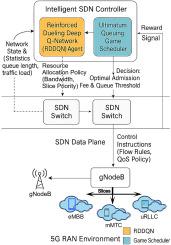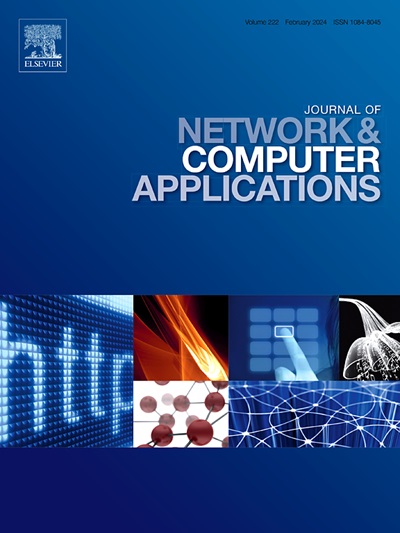Intelligent congestion control in 5G URLLC Software-Defined Networks using adaptive resource management via Reinforced Dueling Deep Q-Networks
IF 8
2区 计算机科学
Q1 COMPUTER SCIENCE, HARDWARE & ARCHITECTURE
引用次数: 0
Abstract
Centralized control of Software Defined Networking (SDN) yields efficient management of network resources and offers a global perspective. However, centralized controllers have many performance and scalability issues, particularly given the rapid expansion of 5G connectivity. The latest demands on the transport network come from areas such as increasing RAN and mobile broadband service capacity, new 5G-enabled services and the dynamic deployment flexibility of the 5G Radio Access Network (RAN) split architecture, with its tight transport characteristics. These characteristics are particularly evident in the fronthaul segment of RAN, where latency and synchronization requirements pose significant challenges. Enhanced automation capabilities in the operations and management domain represent a key requirement to meet these challenges. Traditional machine learning (ML) techniques, which concentrate the training data and carry out sequential model learning over a sizable data set, are the main emphasis of current wireless network learning approaches. However, using a huge dataset for training is inefficient since it takes a lot of time and does not use resources or energy efficiently. Hence, this work focuses on Reinforced Dueling Deep Q-Network (RDDQN), a revolutionary approach to network slicing design for load prediction and resource management in data-driven workflows. Moreover, it can reduce congestion by adopting an Ultimatum queuing game theory-based scheduling mechanism in the controller. The proposed RDDQN achieves an average throughput of 579.34 kbps, an execution time of 12.57 s, goodput fairness of 94.56%, and delay fairness of 10.37 s across various parameters.

基于增强Dueling Deep Q-Networks自适应资源管理的5G URLLC软件定义网络智能拥塞控制
软件定义网络(SDN)的集中控制可以有效地管理网络资源,并提供全局视角。然而,集中式控制器存在许多性能和可扩展性问题,特别是考虑到5G连接的快速扩展。对传输网络的最新需求来自于不断增加的RAN和移动宽带业务容量、新的5G支持业务以及具有紧密传输特性的5G无线接入网(RAN)拆分架构的动态部署灵活性等领域。这些特征在无线局域网的前传部分尤其明显,在那里延迟和同步需求构成了重大挑战。操作和管理领域中增强的自动化能力是满足这些挑战的关键要求。传统的机器学习(ML)技术是当前无线网络学习方法的重点,它将训练数据集中起来,并在一个相当大的数据集上进行顺序模型学习。然而,使用庞大的数据集进行训练是低效的,因为它需要大量的时间,并且不能有效地使用资源或能量。因此,这项工作的重点是增强Dueling深度Q-Network (RDDQN),这是一种革命性的网络切片设计方法,用于数据驱动工作流中的负载预测和资源管理。此外,在控制器中采用基于最后通牒排队博弈的调度机制,可以减少拥塞。提出的RDDQN实现了579.34 kbps的平均吞吐量、12.57 s的执行时间、94.56%的goodput公平性和10.37 s的延迟公平性。
本文章由计算机程序翻译,如有差异,请以英文原文为准。
求助全文
约1分钟内获得全文
求助全文
来源期刊

Journal of Network and Computer Applications
工程技术-计算机:跨学科应用
CiteScore
21.50
自引率
3.40%
发文量
142
审稿时长
37 days
期刊介绍:
The Journal of Network and Computer Applications welcomes research contributions, surveys, and notes in all areas relating to computer networks and applications thereof. Sample topics include new design techniques, interesting or novel applications, components or standards; computer networks with tools such as WWW; emerging standards for internet protocols; Wireless networks; Mobile Computing; emerging computing models such as cloud computing, grid computing; applications of networked systems for remote collaboration and telemedicine, etc. The journal is abstracted and indexed in Scopus, Engineering Index, Web of Science, Science Citation Index Expanded and INSPEC.
 求助内容:
求助内容: 应助结果提醒方式:
应助结果提醒方式:


